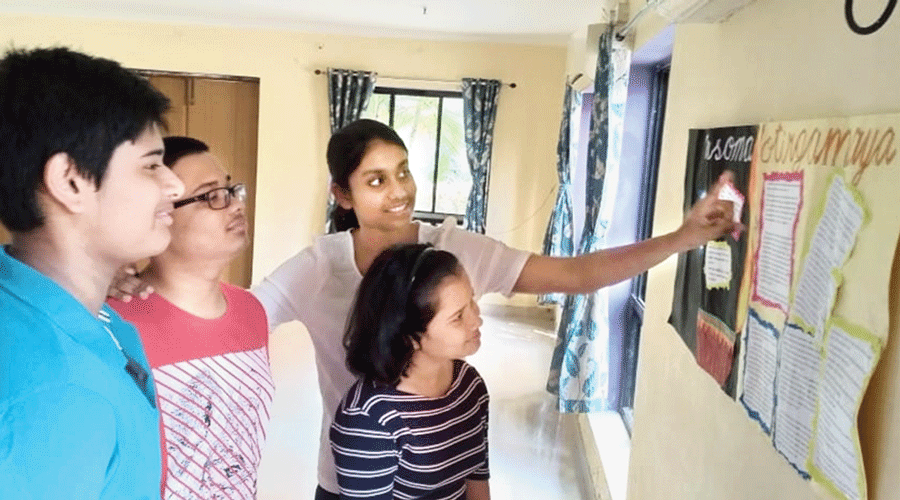While the rest of the city was celebrating Diwali with diyas and crackers, teenagers of Greenfield Heights were trying to discover the light within them. In an initiative called “tamoso ma jyotirgamaya”, meaning from darkness to light, the students got solutions to a number of their problems.
“The essence of Diwali is the choddo pradeep ritual, which signifies illuminating our minds. So I thought of involving teenagers in some activity to help them introspect and overcome their limitations,” said Urmimala Dasgupta, a member of the cultural committee of the complex.
A few days before the festival, an announcement was made and teens were encouraged to write their problems anonymously in chits and insert them in a drop box. Urmimala then compiled them and mailed them to monks of the Ramakrishna Mission order, who replied with their guidance. The problems and solutions were then printed out and put up on display boards near the Kali puja mandap.
There were questions on lack of concentration, impatience, procrastinating and — no prizes for guessing — mobile addiction.
Students looking for focus were informed by the monks that all obstacles were temporary. “Set specific goals and move forward with determination. Ignore negative thoughts and try to control your mind,” the solution said. The monks wished to stay anonymous.
When one student confessed to be lying repeatedly to his parents, the monks said lying was a sign of a weak-minded person who lacks courage to face the truth. “One’s parents are one’s best friends; ready to help their children by all means. So lying to them is not only unworthy but also stupidity, like chopping the very branch one is sitting on,” the teen was informed.
One student felt he was burning out and getting diverted from his goal. He was told that perhaps he lacked a strong and definite goal in the first place. “If you don’t know where you are headed, you end up roaming aimlessly. So ask yourself what you really want from your life. A clear-cut goal will help channelise your time and energy,” he was told.
As for mobile addiction, students were asked if they wanted to be a master or slave as addiction to anything meant being a slave to it, leading to bondage and suffering. “An excess of anything that leads to compulsion or obsession should be avoided and we mustn’t get trapped in this materialistic and artificial world,” they were advised.
What felt most satisfying for the organisers was that many residents — young and old — spent much time reading the board. “I was hesitant to participate in this event but later found that the problems shared by others were similar to mine. I realised I’m not suffering alone and that these are common struggles of my generation,” said Antara Biswas, a Class X student upon reading the board.
Writam Dasgupta of Class IX found himself introspecting for the first time thanks to this initiative. “I shall now follow the valuable guidance and improve myself,” he said.
Parents like Parnasree Bhawmik hoped the solutions would help children inculcate discipline. “The solution helped my child get some insight and a way forward in the right direction,” added Aparajita Dutta. “It was also a good idea to keep them anonymous while sharing their inner struggles.”
Srirupa Bhaumik, another parent, commented on how aptly the theme was depicted on the display board. “The problems were pasted on black chart paper, symbolising darkness, a diya represented the source of light (knowledge), and the solutions were pasted on a bright yellow sheet,” she noted.
